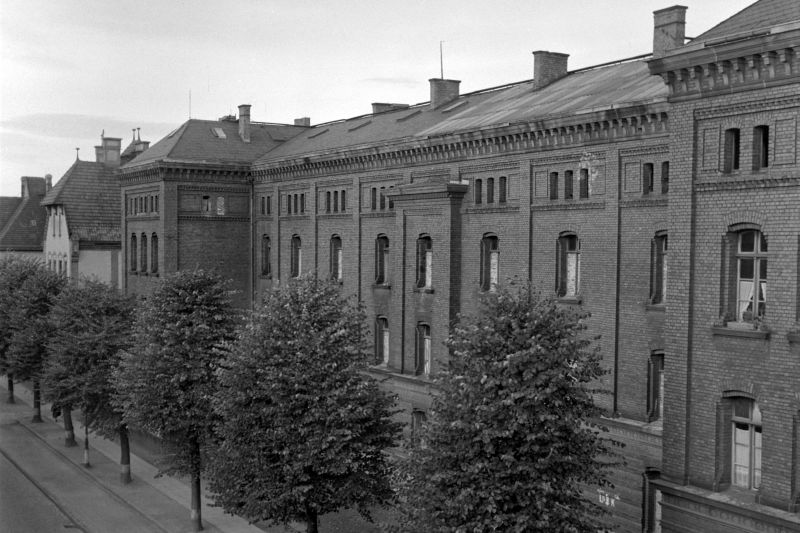By 1953, the workforce at Ermekeilstraße numbered 700. Their tasks included developing the principles governing “internal leadership” of future soldiers – including the exemplar of the “citizen in uniform.” The term was coined by SPD defence policy advisor Friedrich Beermann, before being adopted by Amt Blank.
When, in May of 1955, the Bonn-Paris conventions came into force (thereby also terminating the Occupation Statute), Chancellor Adenauer said the following during a ceremony at Palais Schaumburg: “Germany – as a free nation among free nations – is now a genuine ally of the former occupying powers”. West Germany was now a member of NATO. On 7 June 1955, the agency on Ermekeilstraße, whose workforce had meanwhile grown to 1,300, was officially renamed the Ministry of Defence. On 12 November 1955, the first 101 volunteers of the new German armed forces – only 12 of them were in uniform – officially accepted their certificates of appointment at the barrack’s vehicle depot.
Thus the site also counts as the birthplace of the Germany’s postwar armed forces, the “Bundeswehr” – an “army without pathos,” whose name was promulgated by a law entitled "Gesetz über die Rechtsstellung der Soldaten" (Law on the Legal Status of Soldiers) from 20 March 1956. In the years after 1960, the Ministry moved to Hardthöhe in Bonn-Duisdorf.
